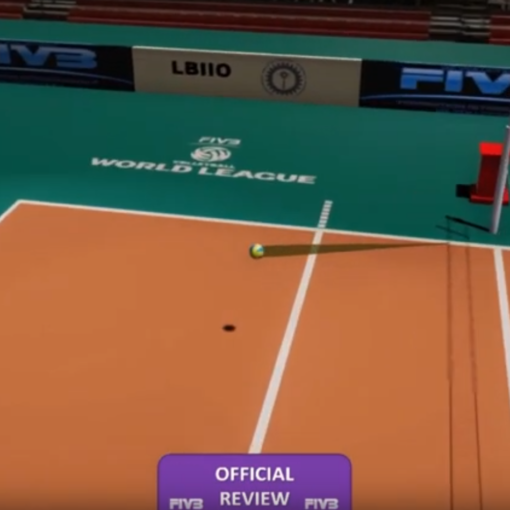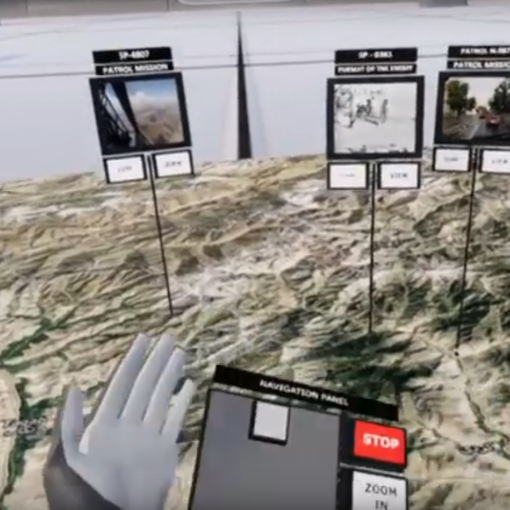INTRODUCTION
One of the most interesting image registration techniques is active imaging using spatio-temporal framing. It is possible to record images for a defined period of time and a specified section of space, by controlling the acquisition process. Images obtained by this method and related metadata offer greater information potential than the conventional solutions.
The image can be a valuable source of information. Frequently the images are projection of three-dimensional space onto a surface. At the same time we realize that in such an image a certain period of time is captured. So the question arises, what period of time and space area are contained in the recorded image. The answer depends on the values of the parameters that are made during an image acquisition. If we assume that the image was captured by our eye or a typical camera – the answer might surprise. This is best illustrated in the picture below.
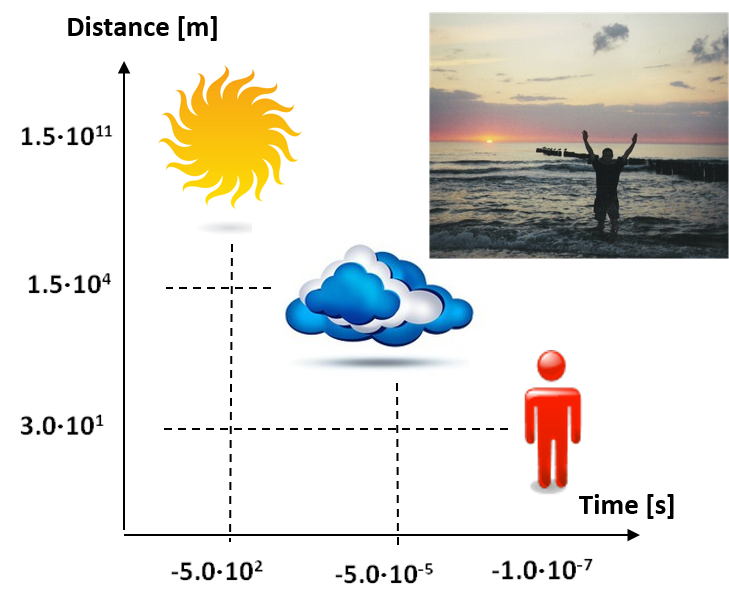 Space and time horizon registered on the classic frame
Space and time horizon registered on the classic frame
The classic image shows the wide horizon of time and space contained in the frame. The distance between the nearest objects and the sun is about. 150mln kilometers. Moreover the corresponding time interval is approx. 8 minutes and 20 seconds.
Is it possible to narrow down the time and space observation? The answer is positive – the solution is the method of spatio-temporal framing.
SELECTIVE IMAGING IN SPACE AND TIME
The information stored in the image is determined by parameters such as: the spatial relationships between the observer and the object, image acquisition time, the lighting of the object and the field of view of the camera. One can assume that the observer (camera) captures the scene where objects are at different distances z1 i z2. These are static (eg. ball) and dynamic (eg. fan) objects. Information recorded in the frame depends primarily on the time of image acquisition parameters – time illumination of the object and the sensor detection time
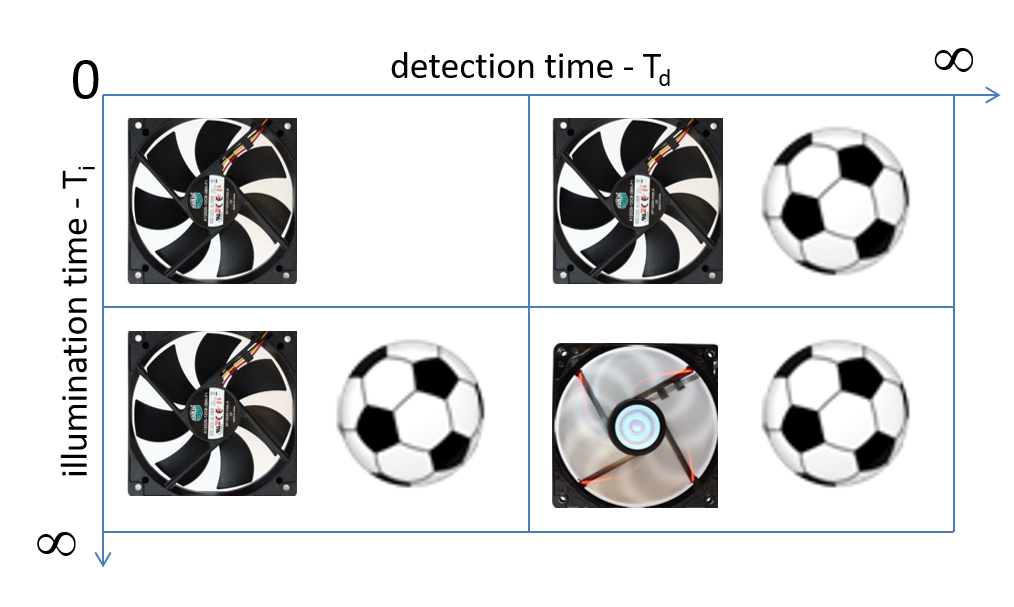 Influence of illumination time and time detection for image acquisition
Influence of illumination time and time detection for image acquisition
In the case of long exposure times of the object (eg. natural lighting) and long detection (eg. a classic camera with a long shutter) the obtained image does not allow observation of dynamic objects. Reducing the time of lighting or detection time, the time interval of recorded events is limited. It becomes possible to observe a dynamic object. However, the horizon of space is not limited. Simultaneously, reducing the exposure time and the detection time, the horizon of time and space can be narrow.
Acquisition parameters :
– illuminator and detector position relative to the object L,
– the time interval between the light and the detection Tdel,
– depth and time period of observation ΔL=L(-)+ L(+), ΔT=T(-)+ T(+) .
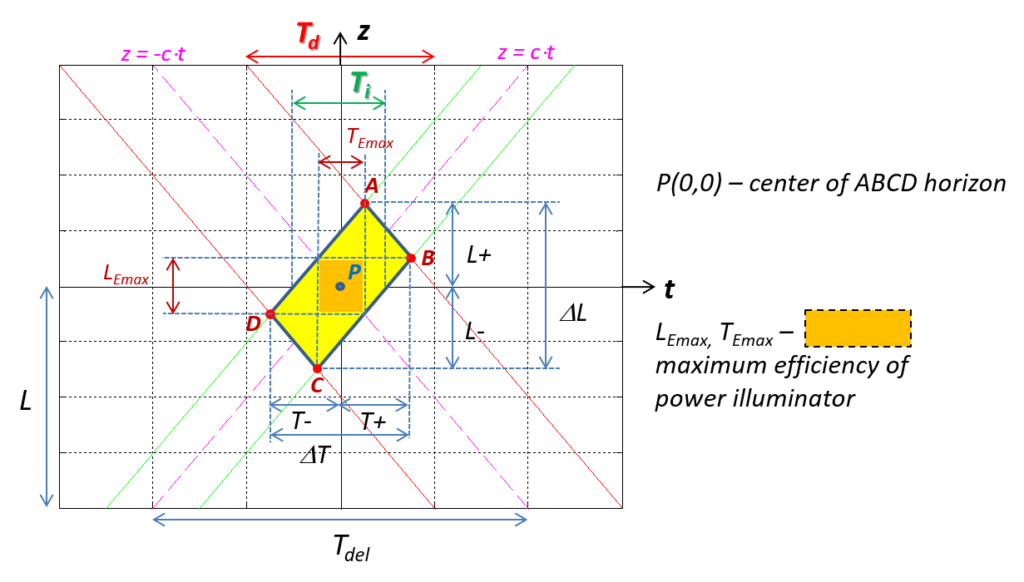 ABCD – spatio-temporal horizon
ABCD – spatio-temporal horizon
ASPECTS OF MEASURING METHODS
Space-time framing can be applied to various aspects of measurements, which can be generally divided into two basic groups.
Designing of measurements
Using the diagram (t,z) can be realized the various measurement aspects in the area of imaging techniques. It is essential to understand the problem of measuring and spreading it on the spatial and temporal parameters of the image acquisition process. The starting point can be specification of the required spatio-temporal horizon in relation to the object of research {P(t,z), DT, DL}. On this basis it is possible to determine the timing of the methods (eg. lighting time Ti, detection time Td and the interval TA+TB) as well as its spatial parameters (distance illuminator LA and receiver distance LB from the object of research) (fig. 4a). In case of the need to match the method to various measurement conditions the parameter of frame can be easily changed (fig. 4b).
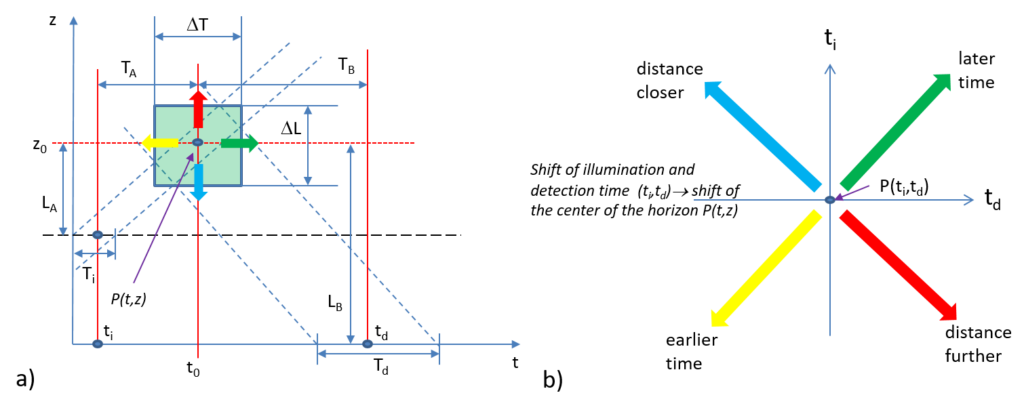 Designing of measurements a) parameter identification, b) modifying parameters
Designing of measurements a) parameter identification, b) modifying parameters
Analysis of measurement data
Using the space-time framing method, the analytical capabilities of recorded images, are a derivatives of image metadata (image acquisition time parameters, the parameters of internal and external orientation of data acquisition process). The results below show the data obtained using the experimental Laser Photography Device developed in the Institute Optoelectronics MUT.
Special property of the active imaging is the autosegmentation of scene (fig. 5a). The proper interpretation of imaging data requires metadata containing information about the captured horizon of time and space. With the knowledge of the observation distance and field of view is possible to measure the geometry of objects. Using data from the sensor 6DoF, there is a possibility of positioning objects registered in the image in space (fig. 5b). An interesting property of the measurement is also an opportunity to observe objects with limited visibility in the presence of dispersion medium.
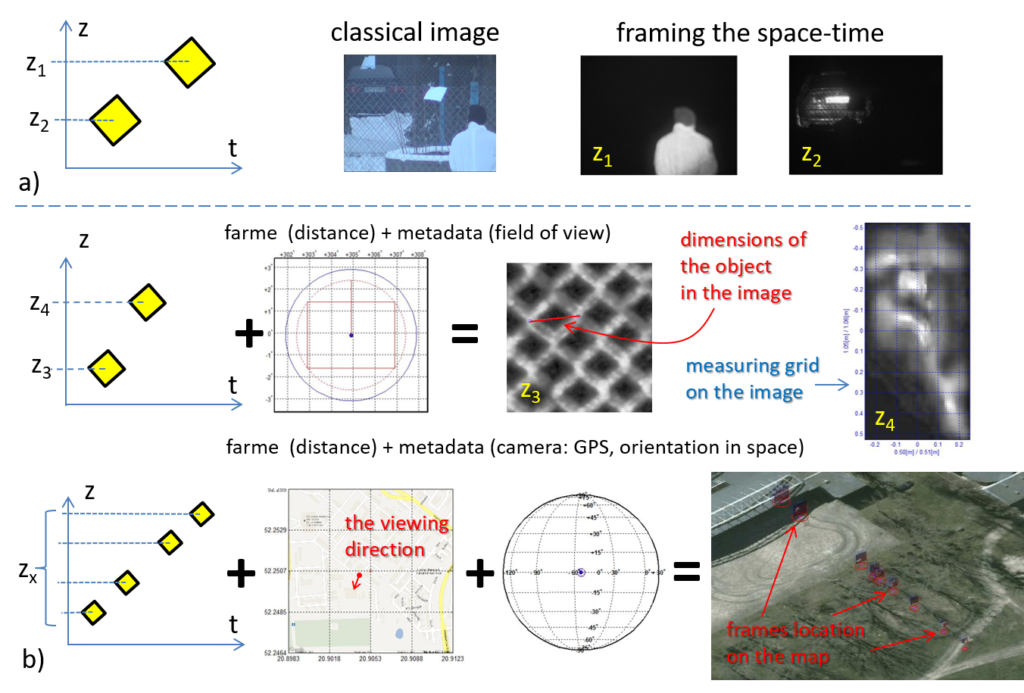 Measurement capabilities of space-time framing
Measurement capabilities of space-time framing
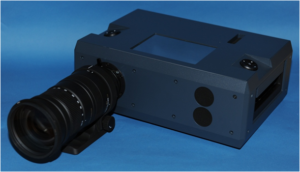
Our experimental device

